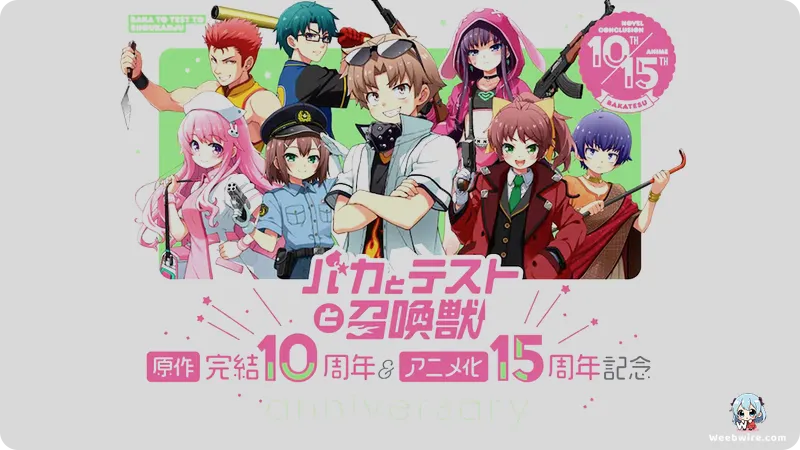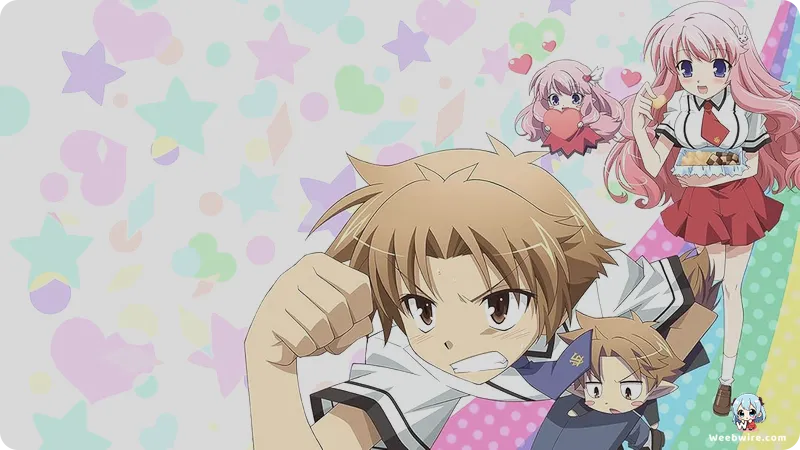Fumizuki Academy Erupts in Laughter: 'Baka and Test - Summon the Beasts: Matsuri' OVA Delivers Unforgettable Festival Chaos and Fan-Favorite Antics

Fumizuki Academy is far from an ordinary school. Its peculiar system dictates student life entirely by academic performance, a premise central to the acclaimed series, Baka and Test - Summon the Beasts. Here, students can conjure "Summoned Beasts," avatar-like entities whose strength directly reflects their summoner's test scores. This bizarre yet brilliant system empowers the lowest-ranked F-class, a motley crew of academic underachievers led by the endearingly clueless Akihisa Yoshii, to challenge superior classes in frantic, often uproarious, battles. Their primary goal is to escape their dilapidated classroom, a space defined by broken tables and tatami mats, and secure better amenities. This core mechanic brilliantly fuses academic satire with high-energy slapstick comedy, setting a distinct tone for the series.
Released in 2011, the two-episode OVA, Baka and Test - Summon the Beasts: Matsuri, serves as a pitch-perfect interlude, encapsulating the franchise's signature charm and comedic genius. While it does not advance the main narrative, it plunges viewers into the peculiar world of a school festival, providing fertile ground for the beloved cast's eccentric personalities to shine. The festival setting orchestrates a myriad of misunderstandings, absurd competitions, and uproarious character-driven gags that fans have come to adore. Matsuri particularly excels at showcasing the peculiar group dynamics within F-class, where deep friendships flourish amidst academic despair, and romantic tensions subtly simmer beneath layers of comedic chaos.
The Enduring Icon: Hideyoshi Kinoshita
One of the most remarkable and enduring elements of Baka and Test is the character of Hideyoshi Kinoshita. Despite his biological male identity, Hideyoshi possesses an astonishingly effeminate appearance, a running gag that sees him consistently mistaken for a girl, or more humorously, treated as a distinct gender entirely. This comedic phenomenon transcended the anime, evolving into a widespread internet meme and a significant cultural touchstone among global anime enthusiasts. The iconic phrase, "Hideyoshi is Hideyoshi," perfectly encapsulates the character's unique status and the fandom's affectionate embrace of his gender ambiguity. So immense was his popularity that it humorously inspired the creation of gender-specific restrooms in fan art and even real-world events, acknowledging Hideyoshi's unique category. The Matsuri OVA relentlessly continues this gag, with various characters, both male and female, exhibiting undeniable attraction to Hideyoshi, firmly cementing his status as a comedic and fan-favorite icon. His identical twin sister, Yuko, frequently acts as a comedic foil, leading to double-takes and further hilarious confusion.
Akihisa Yoshii: The Ultimate Idiot
At the heart of much of the series' slapstick lies Akihisa Yoshii, the self-proclaimed "ultimate idiot" of F-class. Akihisa's legendary low scores often relegate him to the role of a human shield or subject him to bizarre, painful, and frequently self-inflicted misfortunes. His remarkable resilience in the face of constant physical abuse, primarily from Minami Shimada (who often misinterprets his actions as perverted) and Mizuki Himeji (whose affection unintentionally manifests in dangerous ways, particularly through her lethal cooking), forms a cornerstone of the series' humor. The Matsuri OVA amplifies these moments, underscoring that even amidst the festive atmosphere, Akihisa's life remains a perpetual cycle of pain and misunderstanding. His utter obliviousness to the romantic feelings directed towards him by both Himeji and Minami adds another layer of comedic frustration for the audience, a dynamic further highlighted during the festival's various activities.

The creative visionaries behind the original light novel series, author Kenji Inoue and illustrator Yui Haga, masterfully crafted a world that expertly balances its outlandish premise with a cast of genuinely endearing characters. Inoue's writing is characterized by its rapid-fire comedic dialogue and escalating absurdities, while Haga's distinctive character designs perfectly capture each personality, from the perpetually exasperated Yuuji Sakamoto to the stoic yet secretly vulnerable Shouko Kirishima. The animation studio, SILVER LINK., flawlessly brought Baka and Test to life, celebrated for its vibrant animation and adept handling of both intense action sequences (during the summoned beast battles) and nuanced character expressions. Their work on Matsuri upheld these high visual standards and precise comedic timing, ensuring the OVAs felt like a seamless, essential extension of the main series rather than mere filler. The dynamic visual gags, particularly during the festival games and the infamous "punishment" scenes, are executed with remarkable precision, amplifying the humor to peak levels.
The "Summoned Beast" system itself is a treasure trove of clever intricacies. While their HP is determined by academic scores, their abilities often ingeniously reflect the subject in which a battle is being waged. For example, a beast summoned during a math battle might exhibit superior attack power if its summoner excels in mathematics. This intricate layer injects strategic depth into the otherwise chaotic battles, compelling students to consider not only their overall intellect but also their proficiency in specific academic disciplines. The F-class, despite their dismal academic standing, frequently manages to outwit their opponents through ingenious tactics and sheer collective determination, a testament to Yuuji's strategic brilliance and Akihisa's often unwitting contributions. The festival setting in Matsuri allows for innovative applications of this system in non-traditional battle scenarios, brilliantly showcasing its versatility and the students' boundless ingenuity.
Beyond the laughter, the series offers a subtle yet fascinating commentary on the Japanese education system, albeit viewed through a highly exaggerated lens. The rigid, class-based structure and the pervasive emphasis on standardized testing are satirized, revealing how such a system can cultivate vastly disparate learning environments and opportunities. The F-class, despite being labeled the "baka" (idiot) class, frequently displays more genuine camaraderie, creative problem-solving skills, and unconventional thinking than their higher-ranked counterparts, who are sometimes depicted as arrogant or overly reliant on their academic prowess. This provides a charming counter-narrative, subtly suggesting that true intelligence extends far beyond mere test scores. The festival activities within the OVA, often demanding teamwork and imaginative solutions rather than rote memorization, subtly reinforce this profound theme.
The enduring appeal of Baka and Test - Summon the Beasts: Matsuri, and indeed the entire franchise, stems from its masterful ability to interweave high-concept comedy with genuinely heartfelt moments. While the humor is undeniably over-the-top, the characters' struggles, their unwavering friendships, and their budding romances are portrayed with a refreshing sincerity. This delicate balance ensures that viewers are not only roaring with laughter at the characters' predicaments but also passionately rooting for their successes and empathizing with their often-misunderstood intentions. The OVAs served as a delightful reminder of why the series resonated so deeply with its audience, offering an abundance of beloved characters and their hilarious antics without the pressure of advancing a complex plot, thereby establishing them as perfect standalone doses of Baka and Test charm. The lighthearted nature of the festival setting in Matsuri provided an ideal canvas for pure comedic exploration, solidifying its place as a fan-favorite entry in the beloved franchise.
Credits
Baka and Test - Summon the Beasts: Matsuri
Author
Kenji Inoue
Cover Art
Yui Haga
Studio
SILVER LINK.
Publisher
Enterbrain





